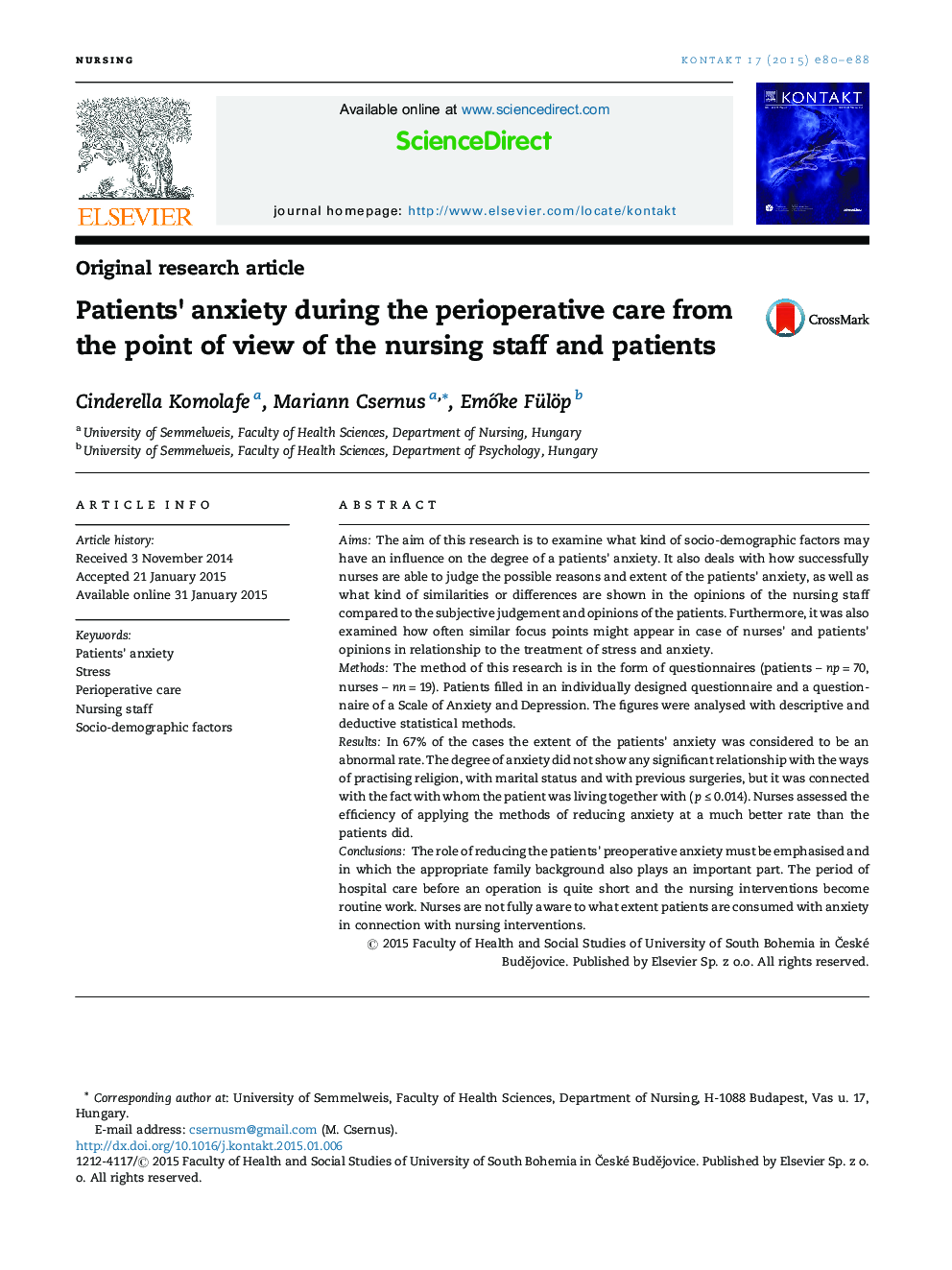| Article ID | Journal | Published Year | Pages | File Type |
|---|---|---|---|---|
| 1084436 | Kontakt | 2015 | 9 Pages |
AimsThe aim of this research is to examine what kind of socio-demographic factors may have an influence on the degree of a patients’ anxiety. It also deals with how successfully nurses are able to judge the possible reasons and extent of the patients’ anxiety, as well as what kind of similarities or differences are shown in the opinions of the nursing staff compared to the subjective judgement and opinions of the patients. Furthermore, it was also examined how often similar focus points might appear in case of nurses’ and patients’ opinions in relationship to the treatment of stress and anxiety.MethodsThe method of this research is in the form of questionnaires (patients – np = 70, nurses – nn = 19). Patients filled in an individually designed questionnaire and a questionnaire of a Scale of Anxiety and Depression. The figures were analysed with descriptive and deductive statistical methods.ResultsIn 67% of the cases the extent of the patients’ anxiety was considered to be an abnormal rate. The degree of anxiety did not show any significant relationship with the ways of practising religion, with marital status and with previous surgeries, but it was connected with the fact with whom the patient was living together with (p ≤ 0.014). Nurses assessed the efficiency of applying the methods of reducing anxiety at a much better rate than the patients did.ConclusionsThe role of reducing the patients’ preoperative anxiety must be emphasised and in which the appropriate family background also plays an important part. The period of hospital care before an operation is quite short and the nursing interventions become routine work. Nurses are not fully aware to what extent patients are consumed with anxiety in connection with nursing interventions.
